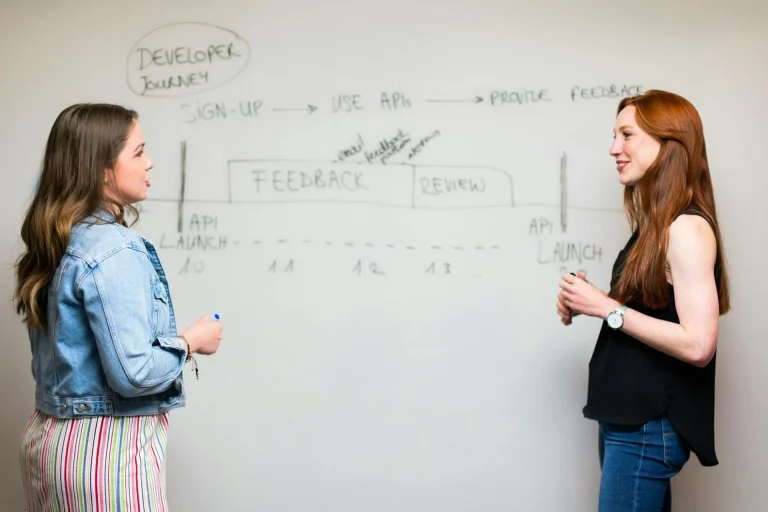When you hear “website accessibility,” you might think of compliance checklists or legal risks. But accessibility is much more than ticking boxes. It’s about making sure your site can be used by everyone—no matter their abilities, devices, or context.
For business owners and site managers, this isn’t just a moral responsibility—it’s smart business. An accessible site reaches more people, improves usability for all visitors, and even boosts your SEO. And if you’re rebuilding your WordPress site, accessibility is the perfect foundation to build on.
At the heart of web accessibility are the POUR principles, the cornerstone of the WCAG guidelines:
- Perceivable
- Operable
- Understandable
- Robust
Let’s break each of these down and explore what they really mean for your website—and how to apply them in practice during a WordPress rebuild.
1. Perceivable: Information Must Be Noticeable
If users can’t perceive your content, they can’t use your site. Perceivability is about making sure information is presented in ways that people can see, hear, or otherwise sense it.
Key aspects of perceivability:
- Text alternatives for non-text content
Every image, infographic, and button should have meaningful alt text. For example, a “Buy Now” button shouldn’t just be labeled “button,” but actually describe its purpose. - Captions and transcripts
Videos should include captions for people who are deaf or hard of hearing. Audio-only content should provide transcripts. - Color contrast
Low-contrast text (like light gray on white) is a common accessibility killer. WCAG recommends a minimum contrast ratio of 4.5:1 for normal text. Tools like the Color Contrast Checker make this easy to verify. - Responsive design
Content should adapt gracefully across screen sizes. Someone using a magnifier, or reading on a small device, should never lose access to information.
Example in practice:
If your site uses icons without labels (say, a magnifying glass for search), make sure they have descriptive labels behind the scenes, so screen readers can interpret them.
2. Operable: Navigation Must Be Usable
It’s not enough to perceive content—you have to be able to interact with it. Operability means users should be able to navigate and control your site, regardless of their input method.
Key aspects of operability:
- Keyboard accessibility
Not everyone uses a mouse. Users should be able to navigate your site with a keyboard alone—tabbing through menus, buttons, and forms without getting stuck. - Clear navigation structure
Menus, breadcrumbs, and site hierarchies should be consistent and intuitive. Avoid overly complex navigation systems that confuse users. - Time limits and interruptions
If your site uses time-sensitive content (e.g., forms that expire), users should be able to extend or adjust the time. Avoid unexpected pop-ups or auto-rotating carousels without controls. - Focus indicators
When users tab through your site, they should see a visible highlight showing where they are. Many themes remove focus outlines for “clean design,” but this actually breaks accessibility.
Example in practice:
Try navigating your WordPress site with just your keyboard. Can you reach every link and button? If not, that’s an operability issue to address in your rebuild.
3. Understandable: Content Must Make Sense
Even if users can perceive and operate your site, they’ll struggle if it’s confusing. The understandable principle is about clarity—making sure your content and interfaces are predictable and easy to grasp.
Key aspects of understandability:
- Readable text
Use plain, straightforward language wherever possible. Avoid jargon unless your audience truly expects it. Break text into short paragraphs and use headings for structure. - Consistent navigation and design
Keep menus, buttons, and layouts consistent across your site. A “Contact” link should always go to the same place—not change depending on the page. - Error handling
Forms should provide clear error messages (“Please enter a valid email address”) instead of vague warnings (“Input invalid”). Highlight fields that need correction. - Predictability
Don’t surprise users with unexpected actions. For instance, don’t auto-play videos, or change a page drastically without clear indication.
Example in practice:
On a checkout form, if a user forgets to fill in their phone number, the site should politely point out: “Please add your phone number so we can confirm your order.” That’s understandable communication.
4. Robust: Content Must Work Across Devices and Assistive Tech
The web changes quickly. A robust site is one that works reliably today—and continues to work tomorrow—across different browsers, devices, and assistive technologies.
Key aspects of robustness:
- Clean, semantic HTML
Use proper tags (<h1>for headings,<button>for buttons) instead of generic<div>s or<span>s styled to look like them. Assistive tech relies on correct markup. - Compatibility with assistive tools
Screen readers, braille displays, and voice navigation should all be able to interpret your site. Test with real tools whenever possible. - Up-to-date technologies
Avoid outdated code, plugins, or themes that may not play well with modern browsers or accessibility standards. - Progressive enhancement
Your site should remain usable even if some scripts or styles don’t load. For example, forms should still work without JavaScript.
Example in practice:
Instead of creating a “fake” button with a styled <div>, use an actual <button> element. This ensures that assistive technologies instantly know its purpose.
Why POUR Matters for Business Websites
Accessibility isn’t just about compliance—it’s about inclusion, reputation, and business growth. When you rebuild your WordPress site with POUR principles in mind, you gain:
- A wider audience: People with disabilities represent over a billion potential customers worldwide. Accessibility also helps older users and those with temporary impairments (like a broken arm).
- SEO benefits: Search engines love well-structured, semantic sites. Accessibility best practices (like alt text and proper headings) align directly with SEO.
- Better usability for everyone: Captions help in noisy environments, clear navigation helps on small screens, and simple forms reduce frustration across the board.
- Reduced legal risk: Many regions, including the EU and US, have accessibility regulations. Non-compliance can result in lawsuits or fines.
How to Apply POUR in WordPress
The great news: WordPress offers a strong foundation for accessibility—if you choose the right approach.
- Pick an accessibility-ready theme: WordPress has a filter for “accessibility-ready” themes that follow WCAG guidelines. If you go custom, make sure your developer builds to those standards.
- Use plugins wisely: Accessibility plugins can help with specific issues (like skip links or contrast toggles), but they aren’t a magic fix. Focus on fundamentals first.
- Test early and often: Don’t wait until launch. Test accessibility at every stage—design mockups, development, and pre-launch.
- Work with experts: If accessibility is new to you, partner with someone who has real experience. Accessibility audits are worth the investment.
Final Thoughts
The POUR principles—Perceivable, Operable, Understandable, Robust—aren’t just abstract guidelines. They’re a practical framework for making sure your WordPress website works for everyone. And when you’re investing in a new site, there’s no better time to get accessibility right.
Building an accessible site is good for your users, your business, and your future. It’s not just about compliance—it’s about creating a digital space that welcomes everyone.
Ready to rebuild your WordPress site with accessibility baked in? Explore my WordPress Rebuild services and let’s make your next website truly inclusive.





